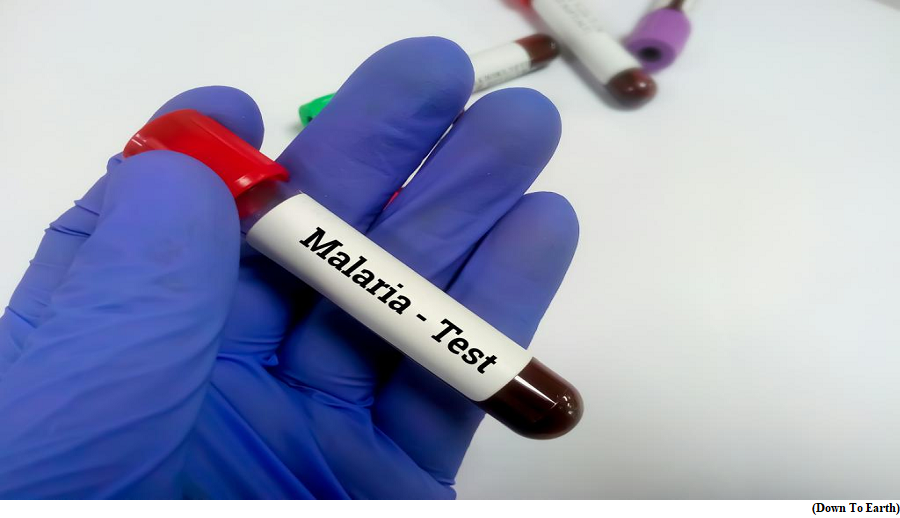How ChAdOx1 NipahB vaccine works (GS Paper 2, Health)

Why in news?
- To combat the deadly Nipah virus (NiV), scientists have developed a vaccine candidate known as ChAdOx1 NiV, which has shown promising results in preclinical trials and has now entered human testing phases.
About Nipah virus:
- The Nipah virus, first identified during an outbreak in Malaysia and Singapore in 1998-1999, is a zoonotic virus.
- It is transmitted to humans from animals such as bats and pigs, and can also spread through contaminated food or directly between people.
- Nipah has epidemic potential, with its fruit bat hosts found in areas home to over two billion people.
What is ChAdOx1 NiV vaccine?
- The ChAdOx1 NiV vaccine uses a replication-deficient chimpanzee adenoviral vector, ChAdOx1, which has been engineered to express the NiV glycoprotein (G protein).
- This protein is crucial for the virus's ability to enter and infect cells, and by presenting it to the immune system without the presence of the actual virus, the vaccine primes the body to recognise and fight off the real pathogen upon exposure.
Efficacy:
- Preclinical studies have demonstrated the vaccine's efficacy. In one study, African green monkeys were vaccinated with ChAdOx1 NiV either once or with a prime-boost strategy, where a second dose is administered to bolster the immune response.
- Following vaccination, the animals exhibited robust humoral and cellular immune responses against the NiV G protein.
- When challenged with the lethal Nipah Bangladesh virus, the vaccinated monkeys showed no signs of disease, and researchers could not detect infectious virus in their tissues, indicating near-complete protection conferred by the vaccine.
- Furthermore, the vaccine is effective in Syrian hamsters, protecting them against bronchointerstitial pneumonia caused by the NiV Bangladesh strain. These findings are particularly encouraging as they suggest that even a single dose of ChAdOx1 NiV may provide sufficient protection against the virus.
What’s next?
- As the vaccine moves into human clinical trials, researchers remain cautiously optimistic. While there are currently no approved vaccines or treatments for Nipah virus infection in humans, the clinical trials of ChAdOx1 NiV represent a beacon of hope.
- If successful, this vaccine could not only save lives but also serve as a model for rapid vaccine development against emerging viral threats.
WHO certifies Cabo Verde malaria free, third African country to do so
(GS Paper 2, Health)
Why in news?
- The World Health Organization (WHO) has certified Cabo Verde (also known as Cape Verde) as a malaria-free country, becoming the third country to acquire the status in the global health organisation’s African region.

Details:
- Till now, WHO has awarded the ‘malaria-free’ certification to 43 countries and 1 territory.
- It has now joined Mauritius and Algeria, who were certified in 1973 and 2019, respectively.
- Africa has the highest malaria burden and accounted for roughly 95 per cent of global malaria cases and 96 per cent of related deaths in 2021.
Certification process:
- The certification is WHO’s official recognition of a country’s malaria-free status.
- It is granted after a country has demonstrated, using rigorous, credible evidence, that the chain of indigenous malaria transmission by Anopheles mosquitoes has been disrupted nationwide for at least three consecutive years.
- A country must also demonstrate the capacity to prevent the re-establishment of transmission.
Case of Cabo Verde:
- Cabo Verde, a group of 10 islands in the Central Atlantic Ocean, has faced significant malaria challenges. Prior to the 1950s, malaria was prevalent on all islands.
- Severe epidemics were common in the most densely populated areas before targeted interventions were implemented.
- Through the targeted use of insecticide spraying, the country eliminated malaria twice: In 1967 and 1983.
- However, subsequent failures in vector control resulted in the disease's reemergence. Since the late 1980s, malaria in Cabo Verde has been limited to two islands: Santiago and Boa Vista, which have been malaria-free since 2017.
- In 2017, the country transformed an outbreak into an opportunity. Cabo Verde identified issues and made improvements, resulting in zero indigenous cases for three years running.
About Malaria:
- Malaria is a life-threatening mosquito borne blood disease caused by plasmodium parasites.
- There are five Plasmodium parasite species that cause malaria in humans and two of these species, P. falciparum and P. vivax, pose the greatest threat.
- Malaria is predominantly found in the tropical and subtropical areas of Africa, South America as well as Asia.
- Malaria is spread by the bite of an infected female Anopheles mosquito.
- The mosquito becomes infected after biting an infected person. The malaria parasites then enter the bloodstream of the next person the mosquito bites. The parasites travel to the liver, mature, and then infect red blood cells.



